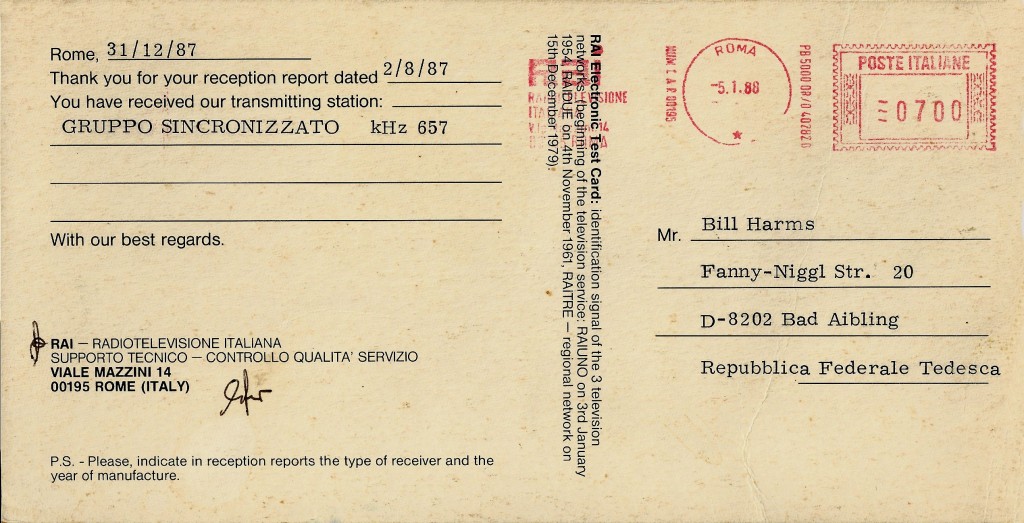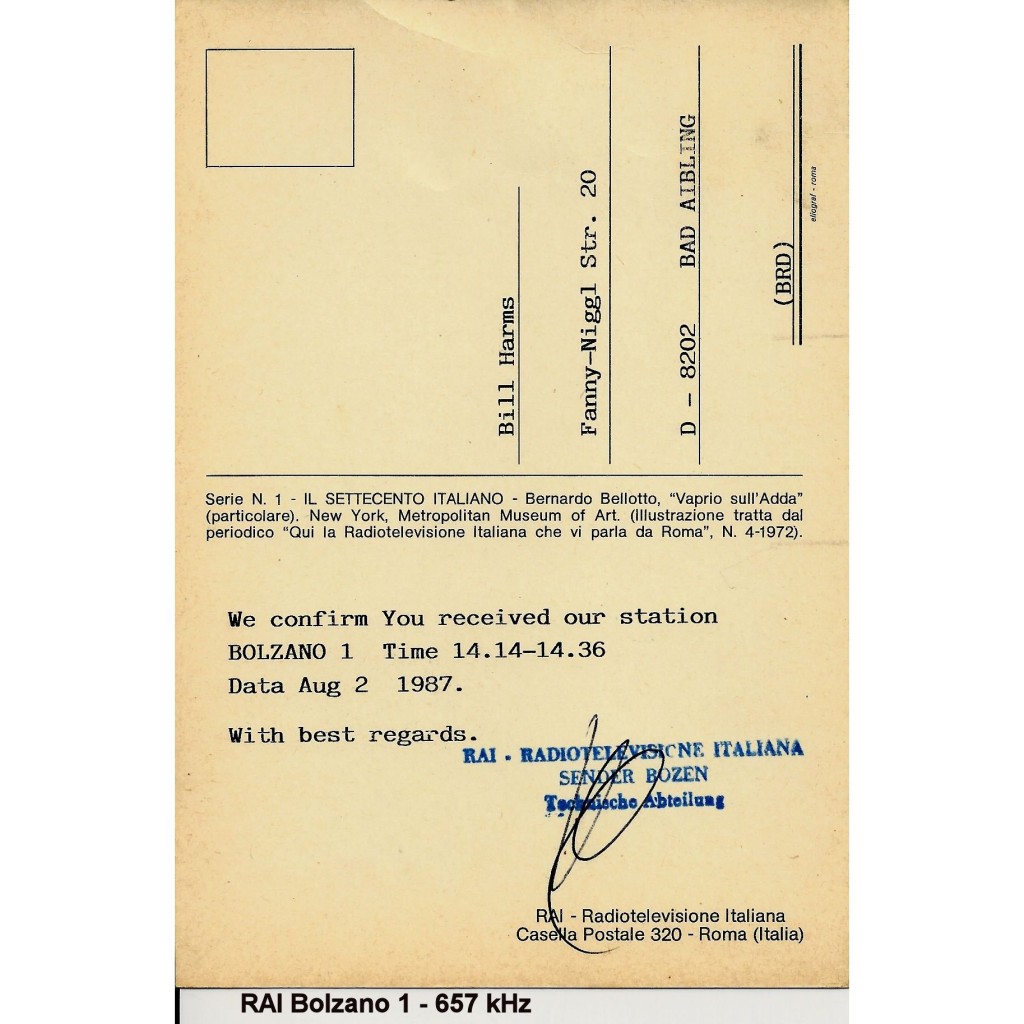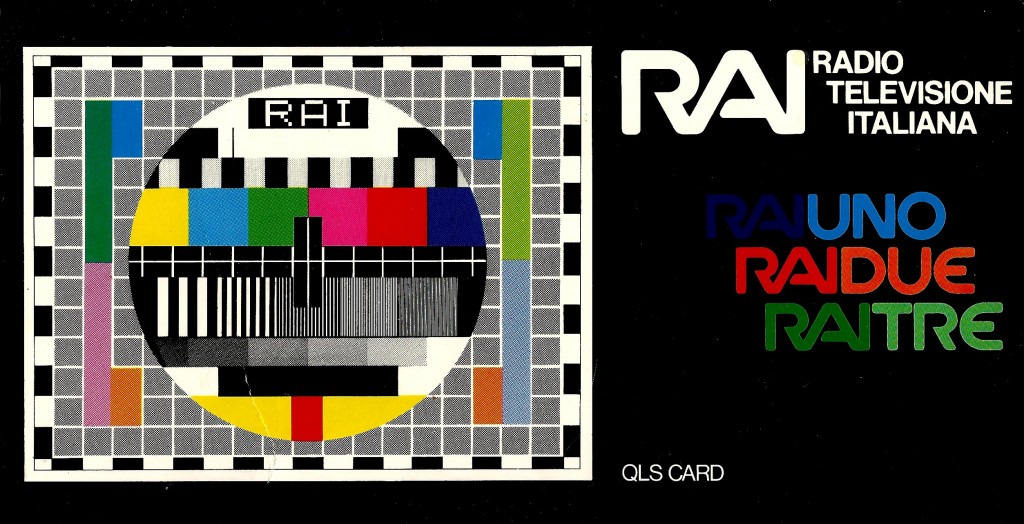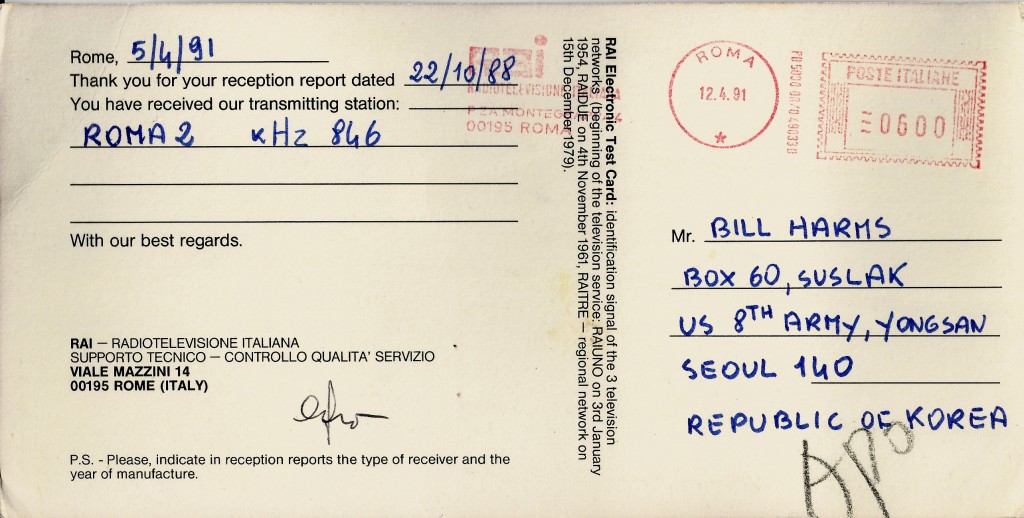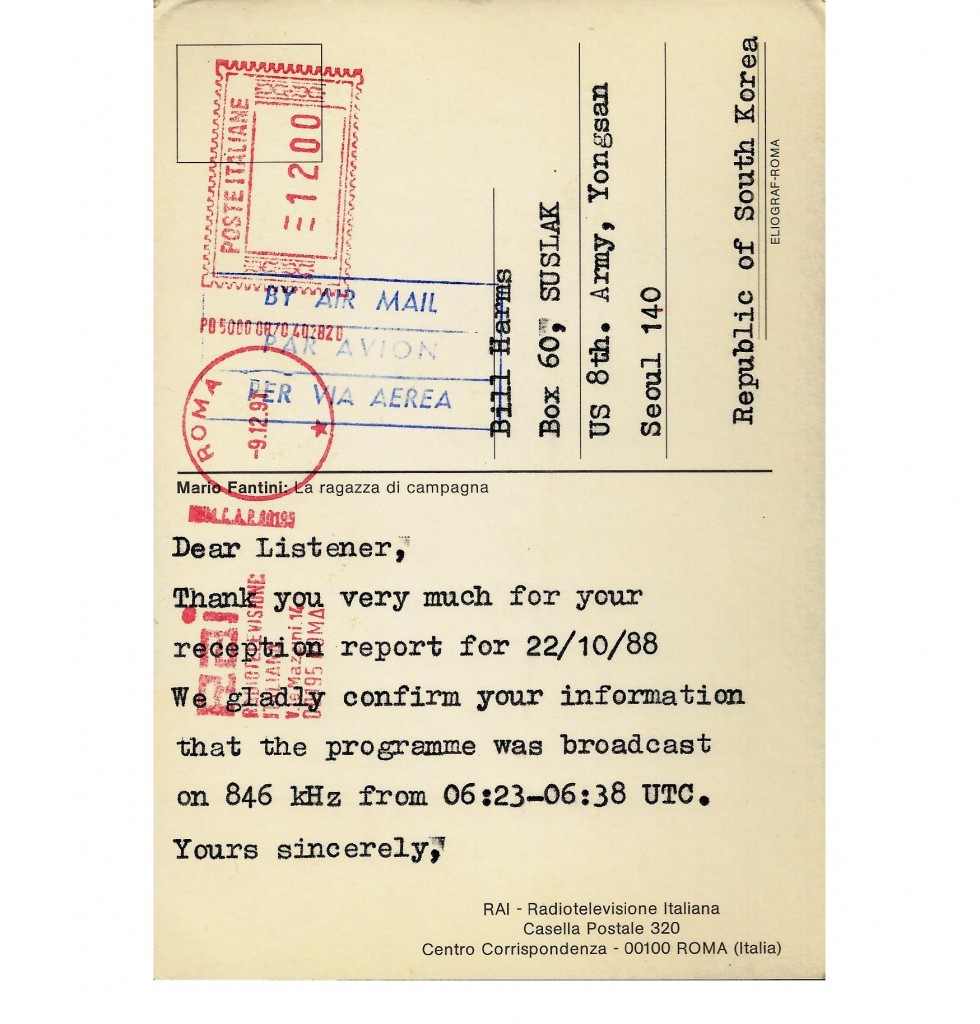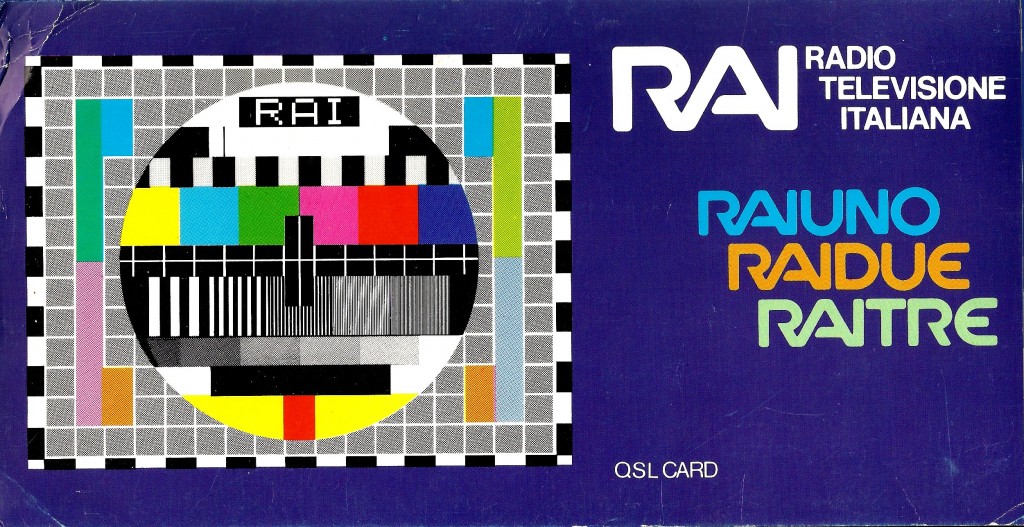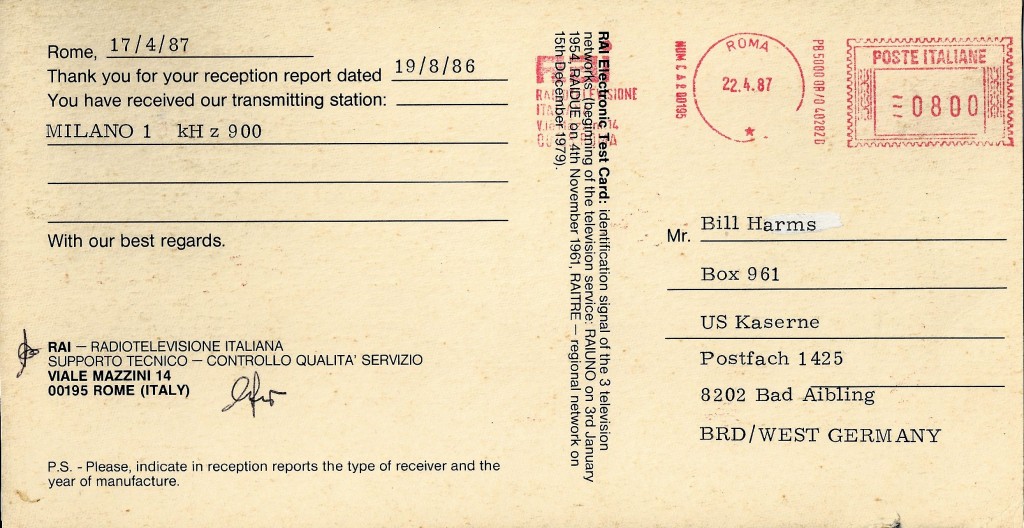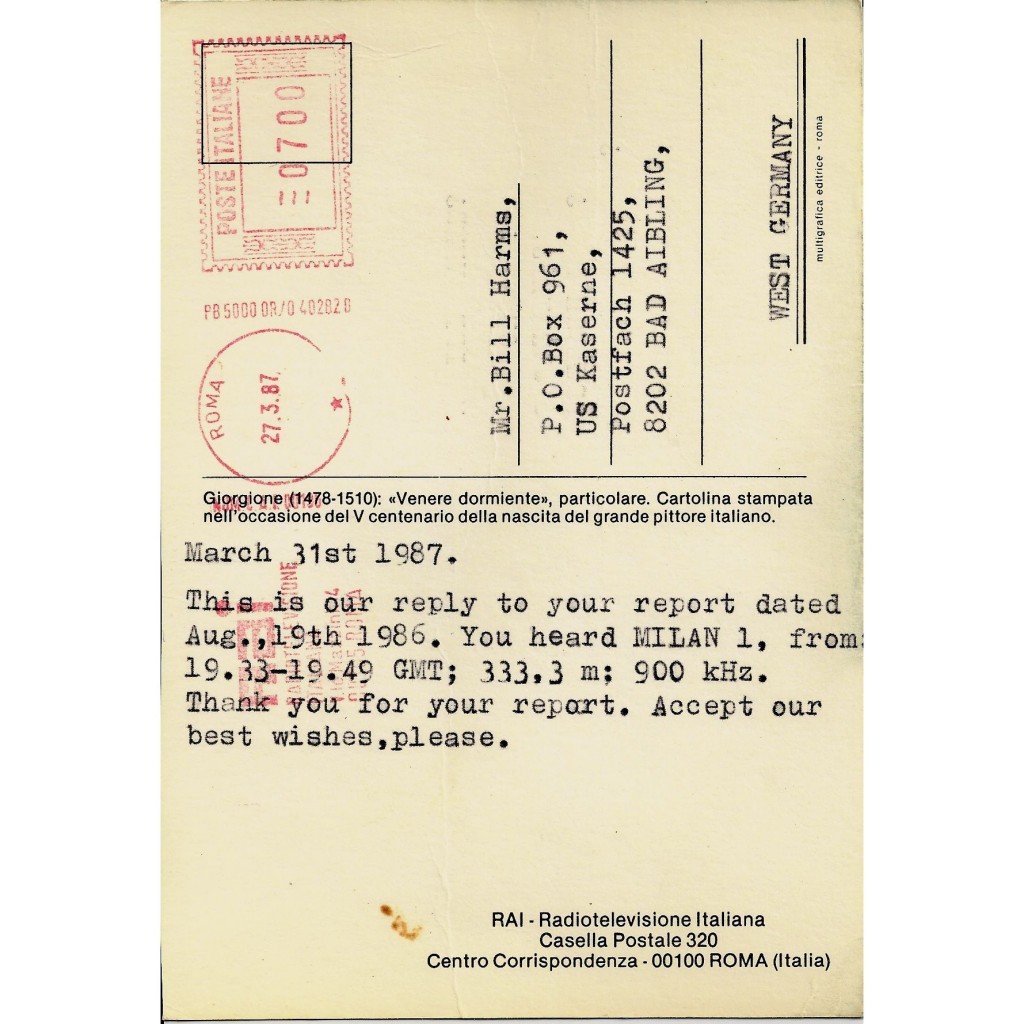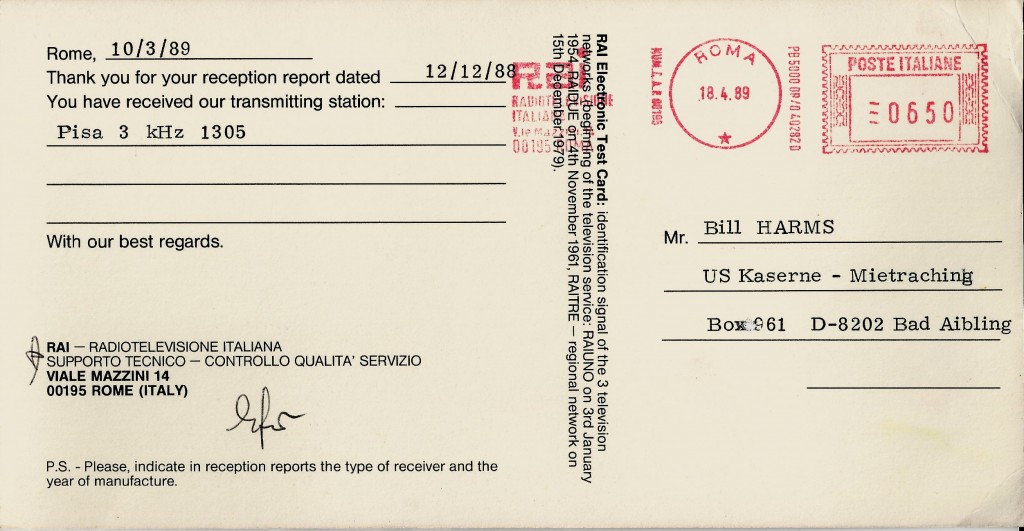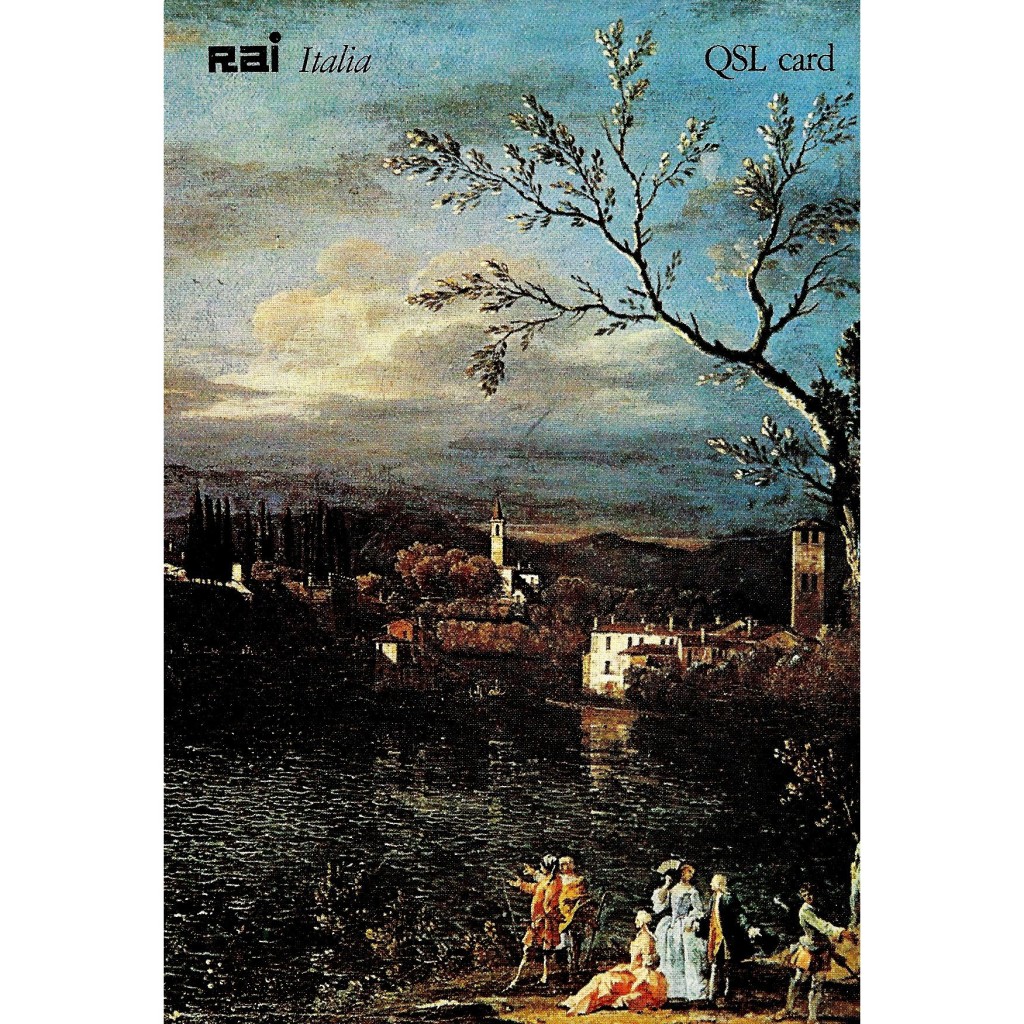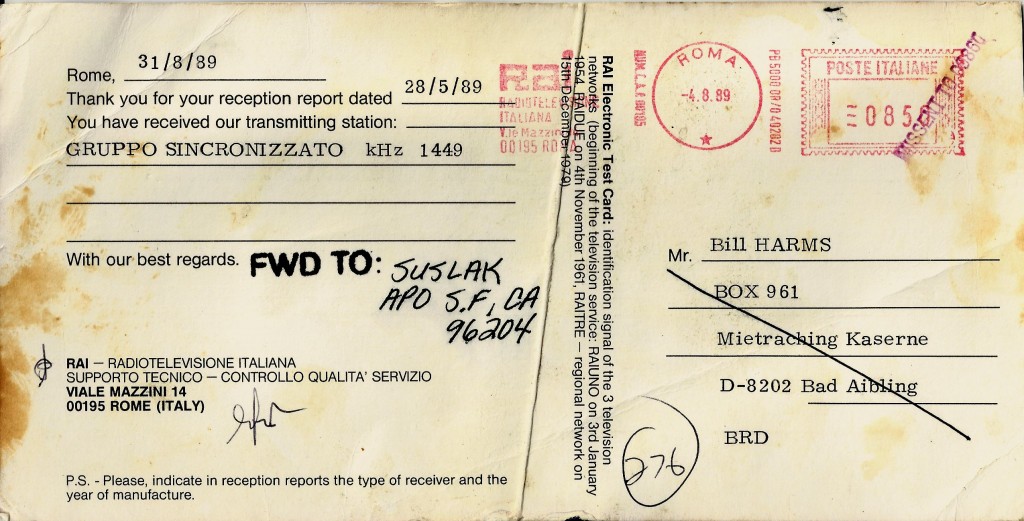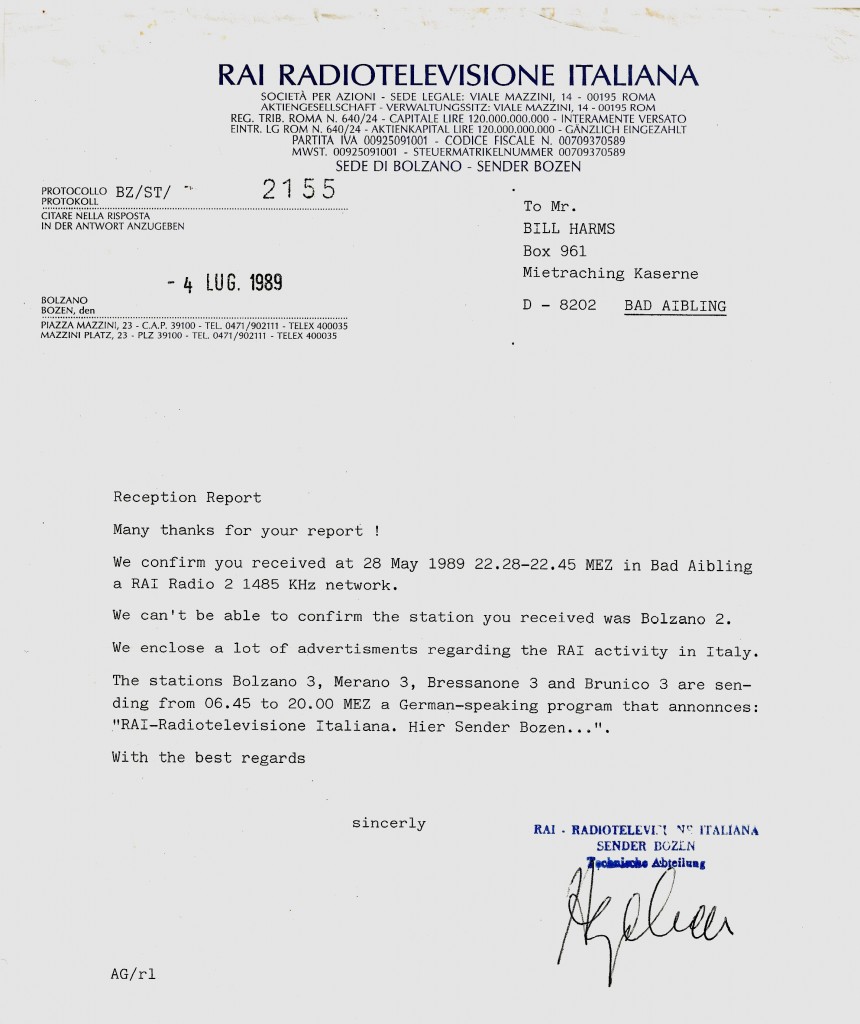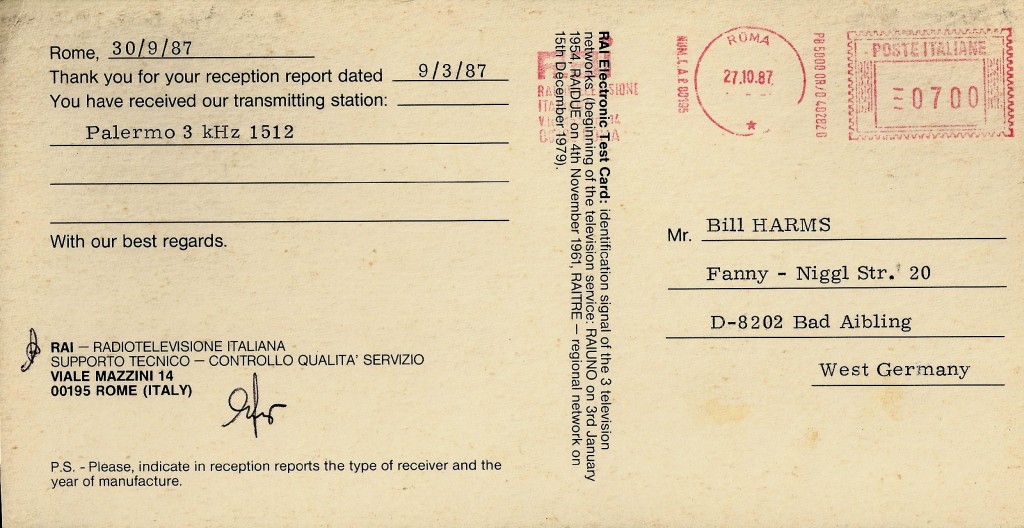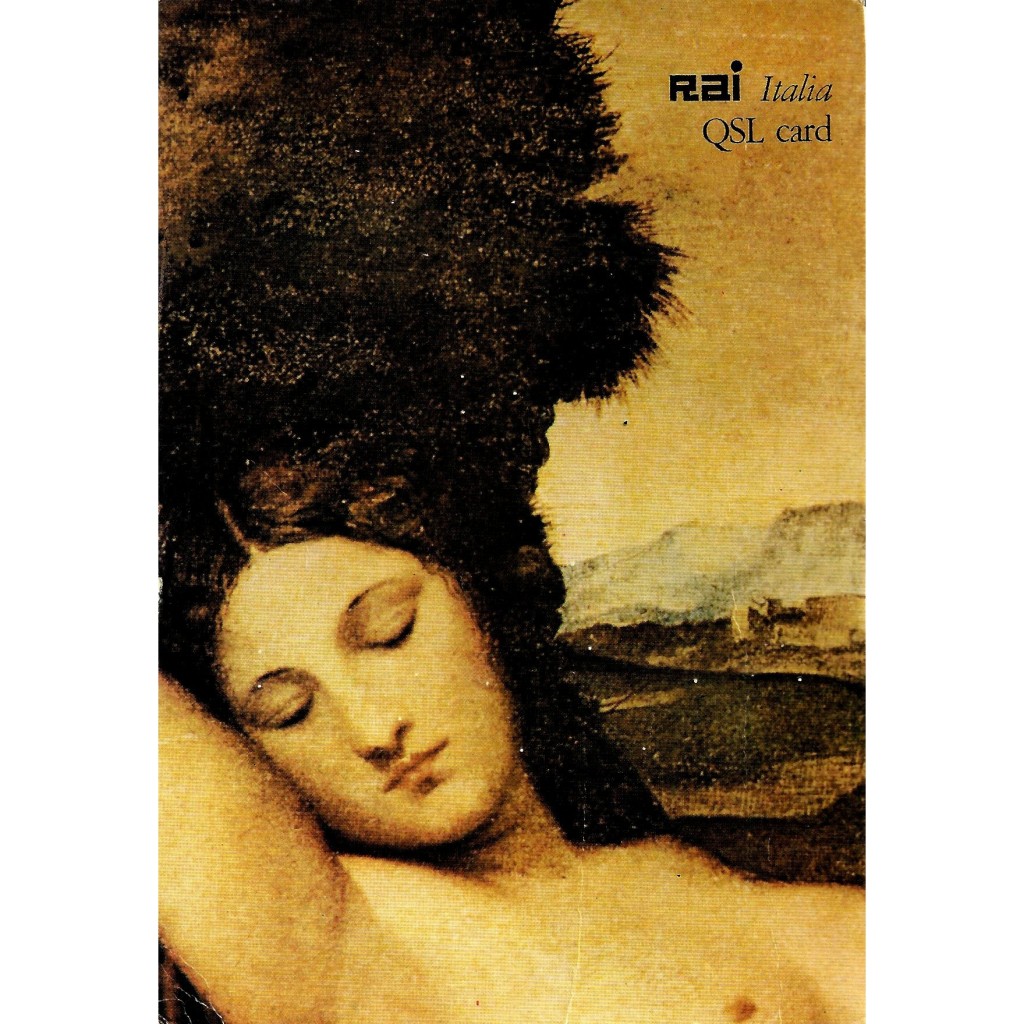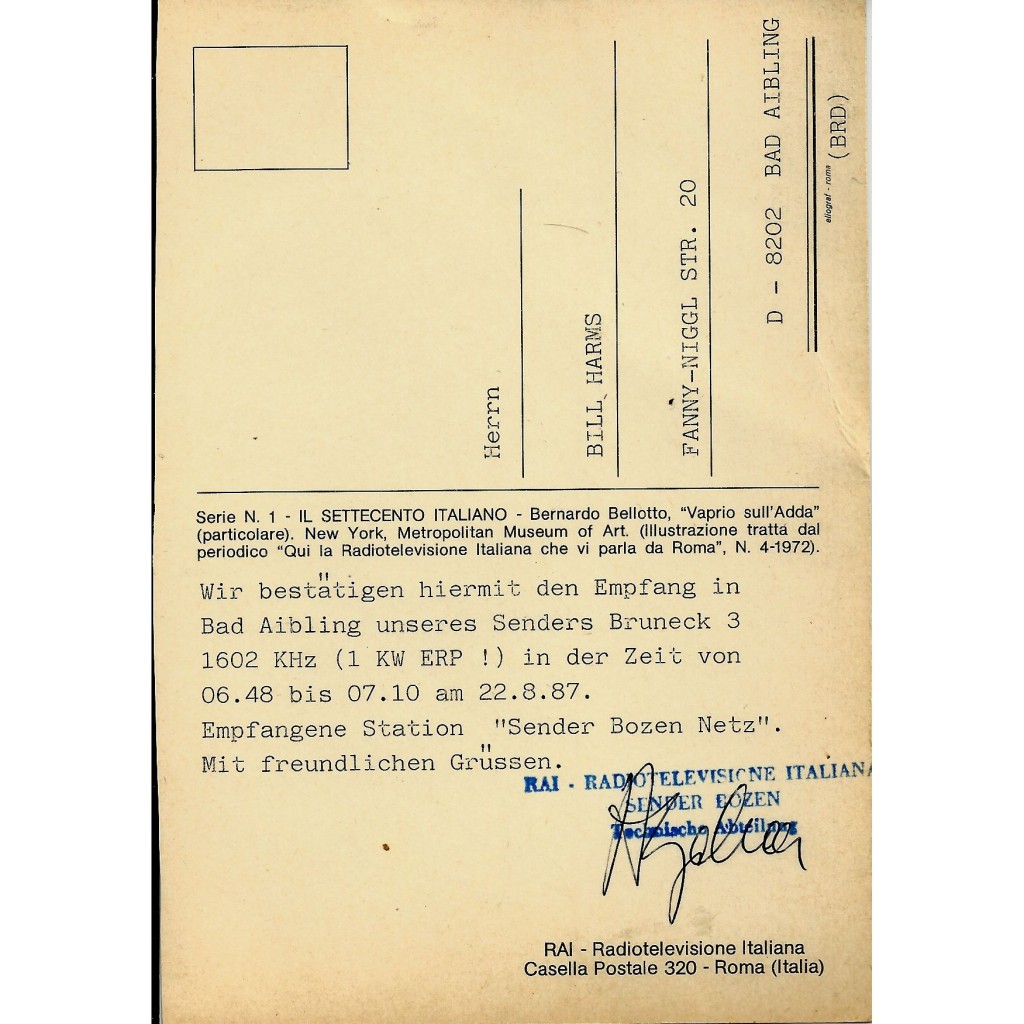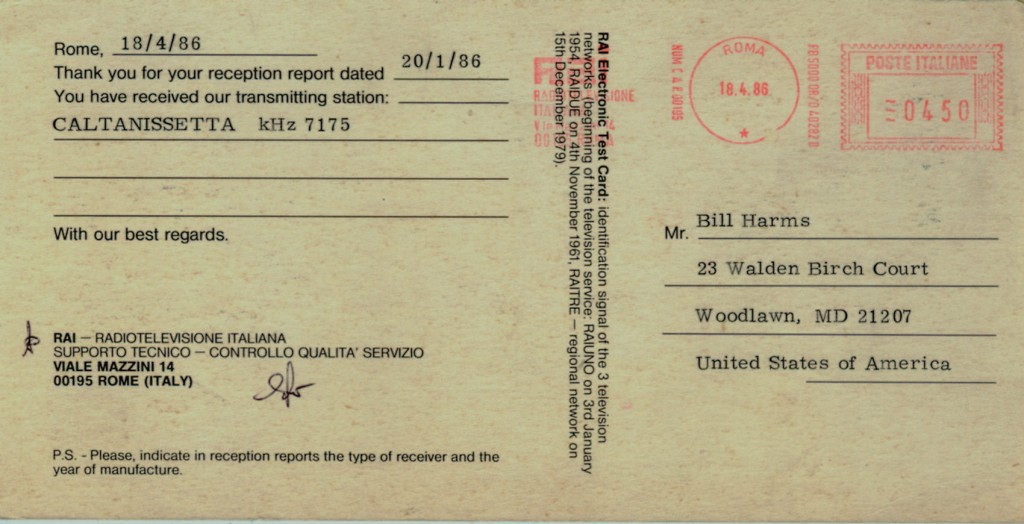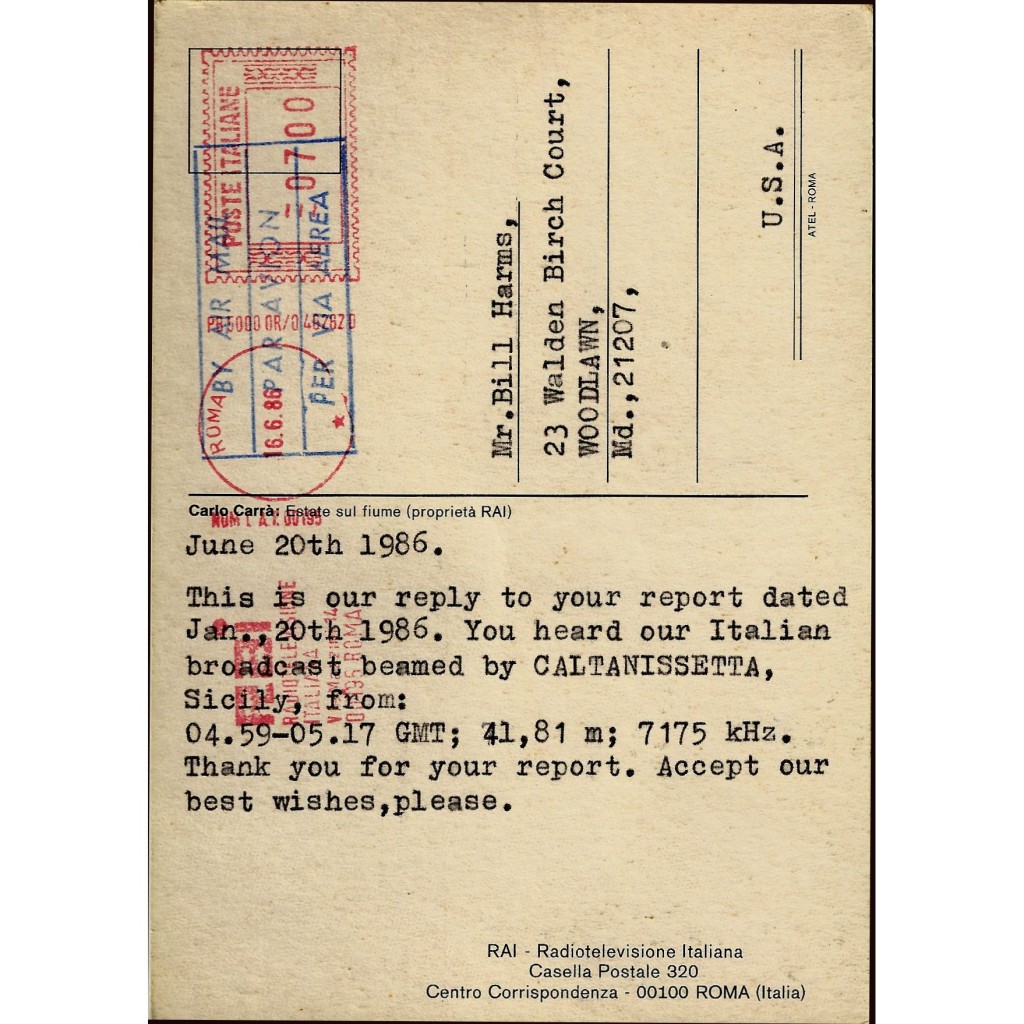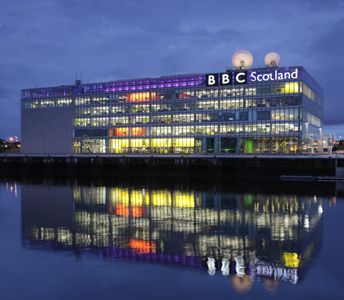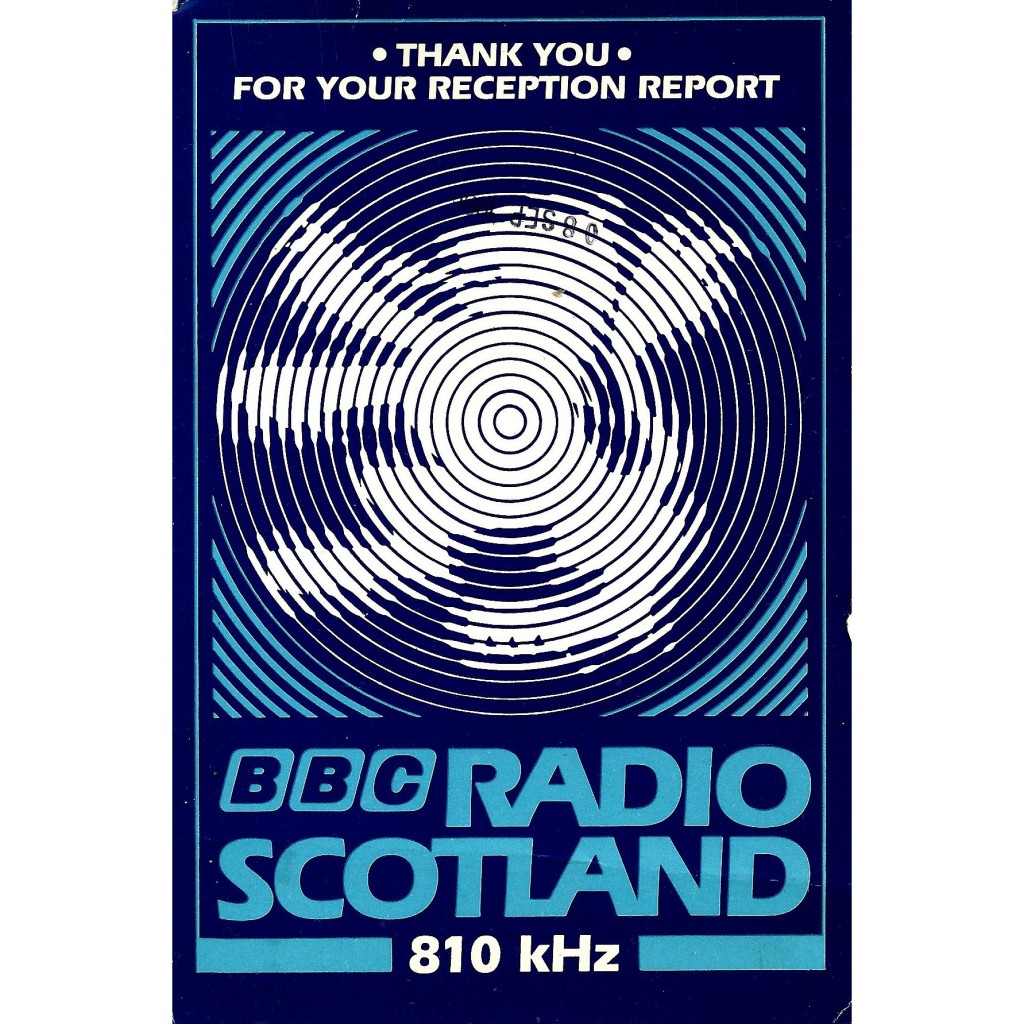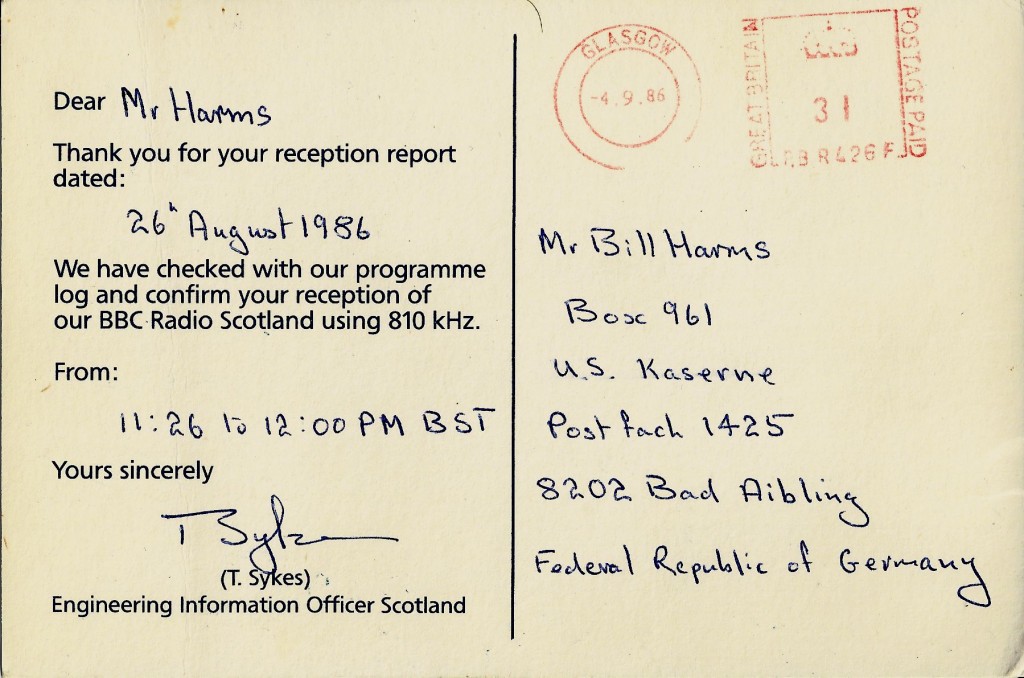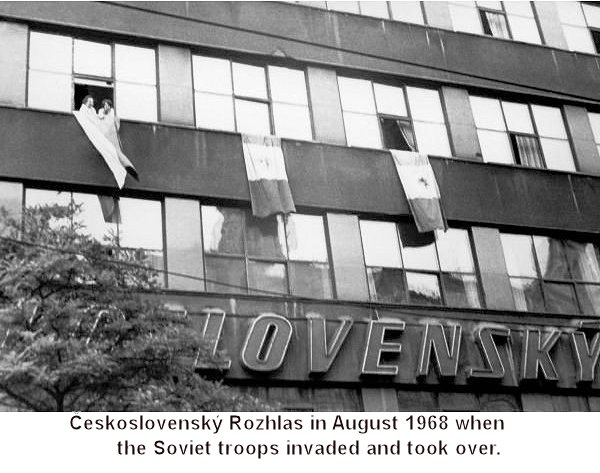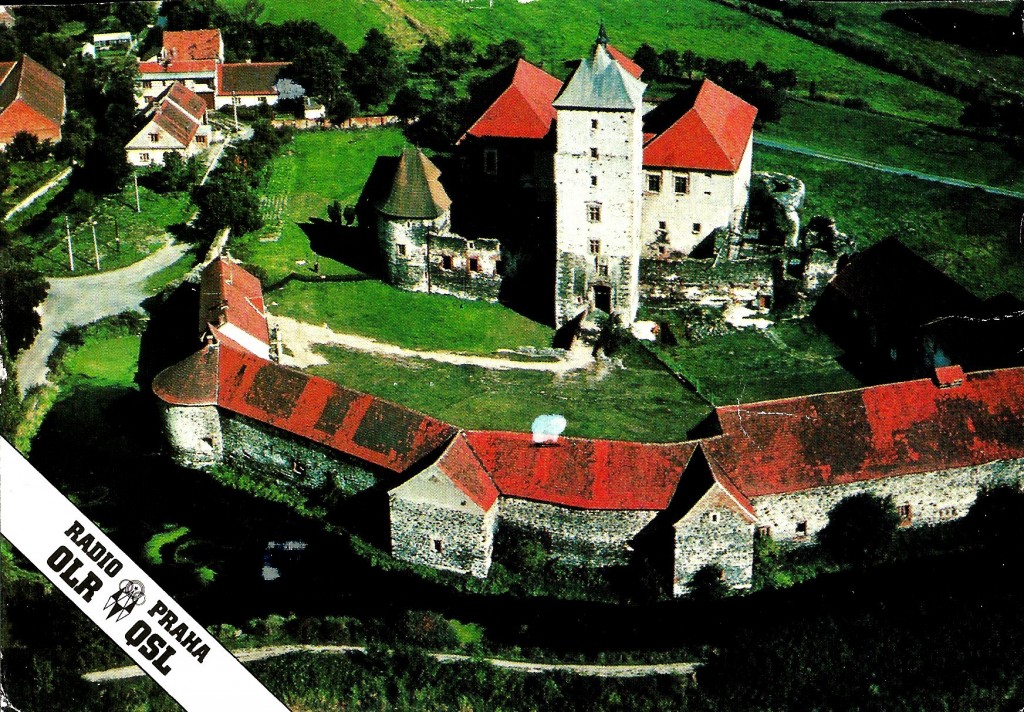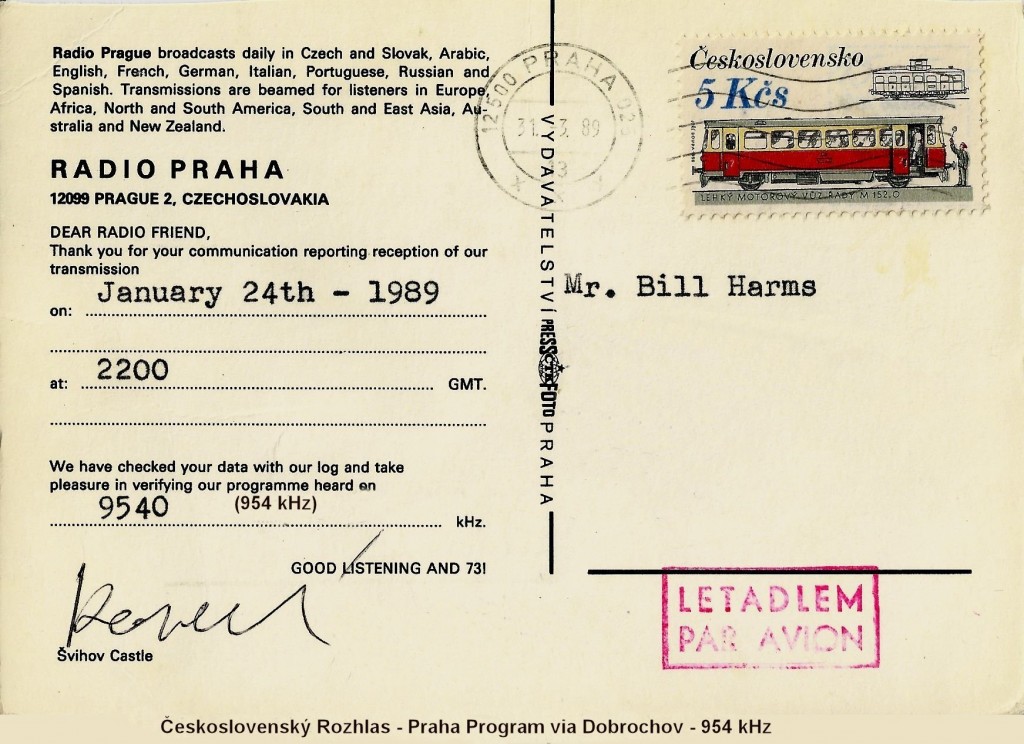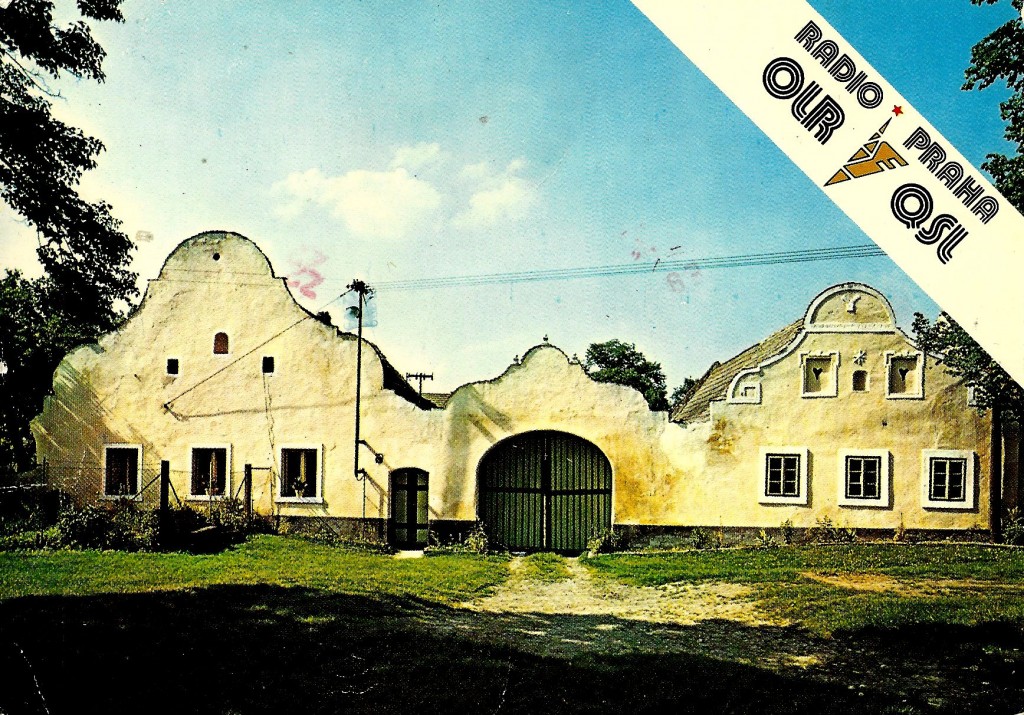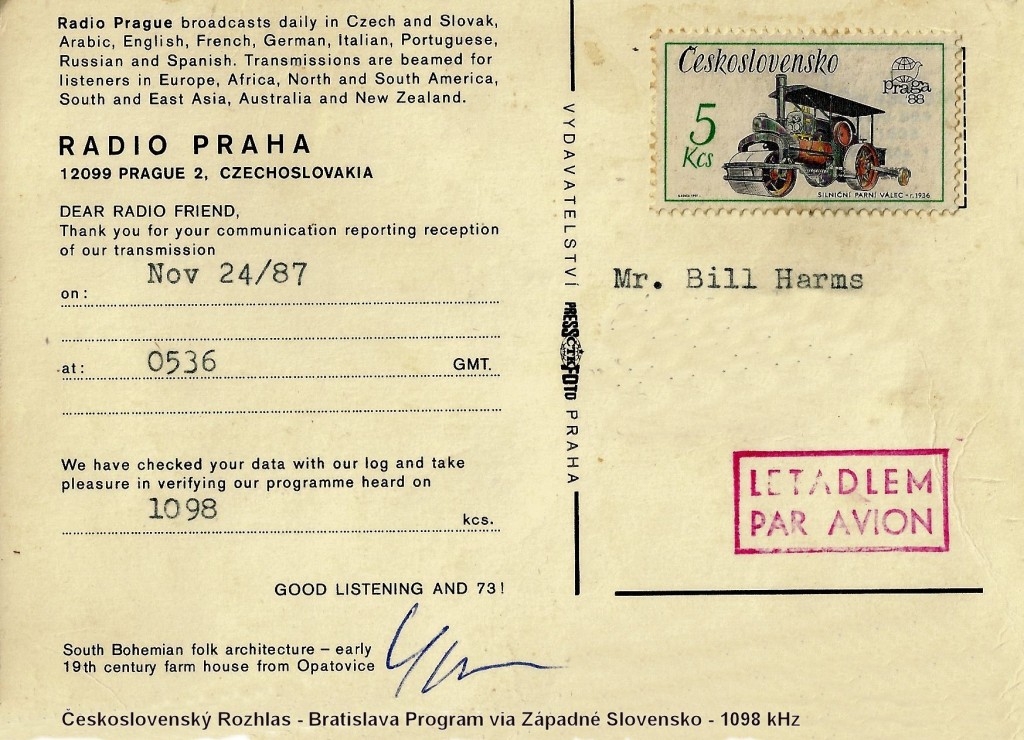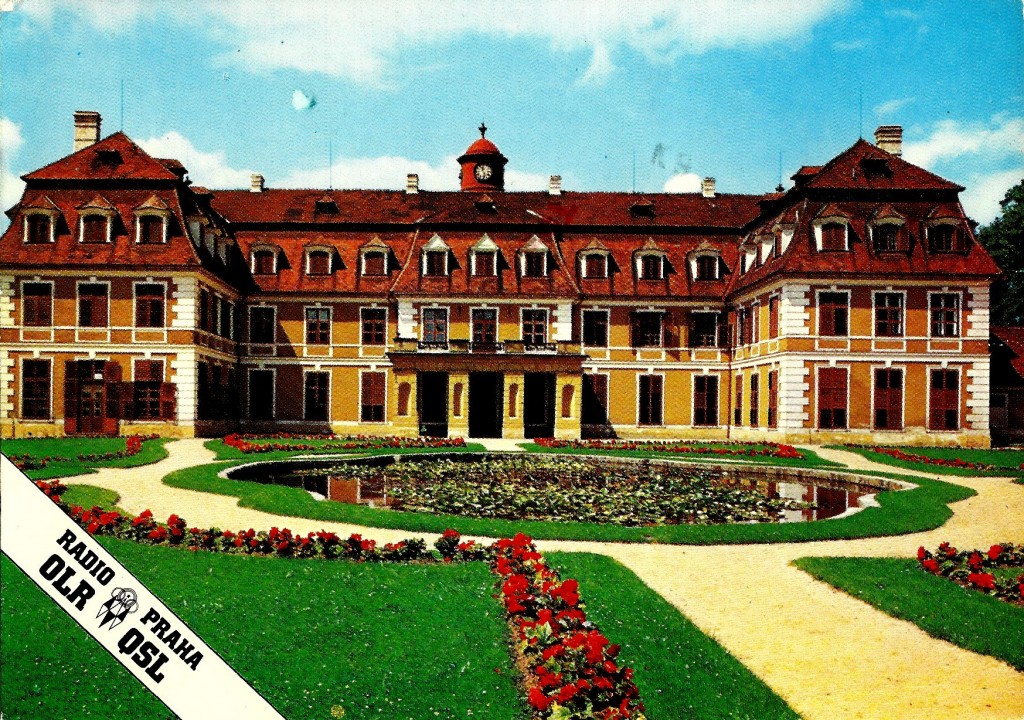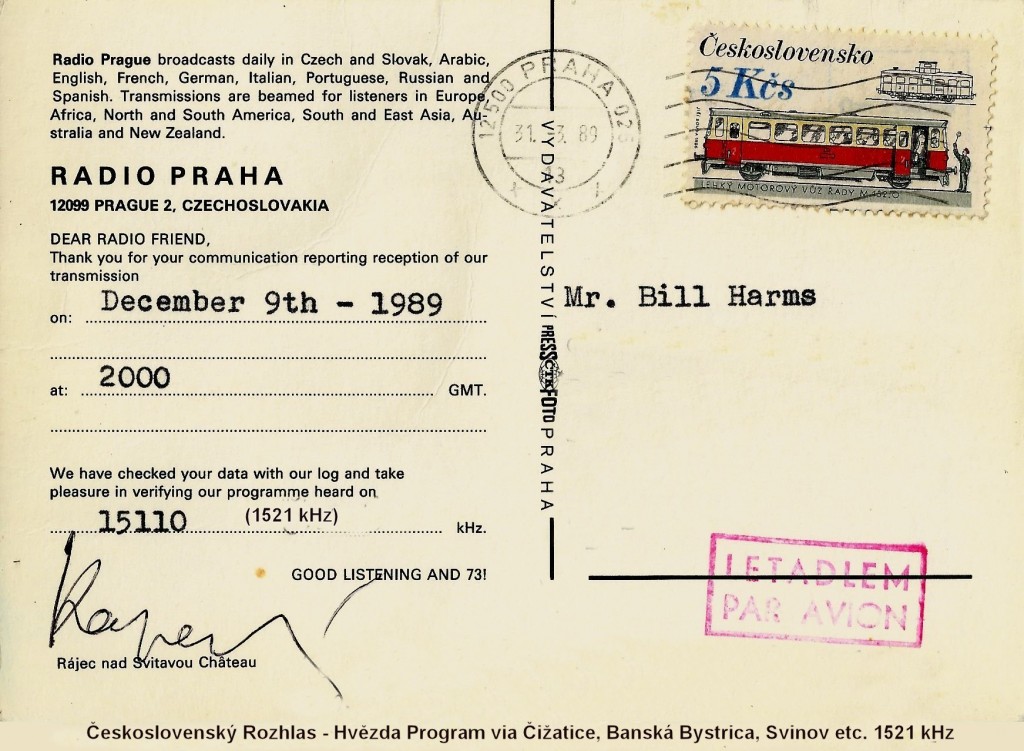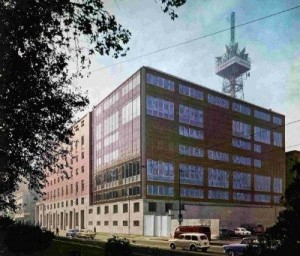
Logging the various Radiotelevisione Italiana (RAI) medium wave outlets was fun. Trying to log the individual local programs was a challenge. I managed to log about 8 or 10 of them. The receptions of RAI Bolzano on 657 kHz and 1602 kHz was for the local German language programs with the reception reports going directly to their local studio.
RAI was a very good verier with a nearly 100 percent reply rate. Below, you can see the QSLs they sent in response for my reception reports. In some cases, they sent two different QSL cards for the same reception report. Apparently, two offices saw the reports and each responded separately. I also logged their RAI 2 outlet on shortwave (7275 kHz) from Sicily and received a QSL card in return for my report.
RAI is Italy’s national public broadcast network. It consisted of three program streams on medium wave, with local breakouts at various times. Today, there are around ten program streams with RAI 1 dominating medium wave. Recently, RAI has run to debt problems with over 442 billion Euros owed.
Look for the QLS card below. (Yes, they issued both QLS and QSL cards. And yes, it is an obvious typo.)
REFERENCE: Corte dei Conti, alert sul debito della Rai http://www.repubblica.it/economia/2015/03/13/news/corte_dei_conti_rai-109444031/

